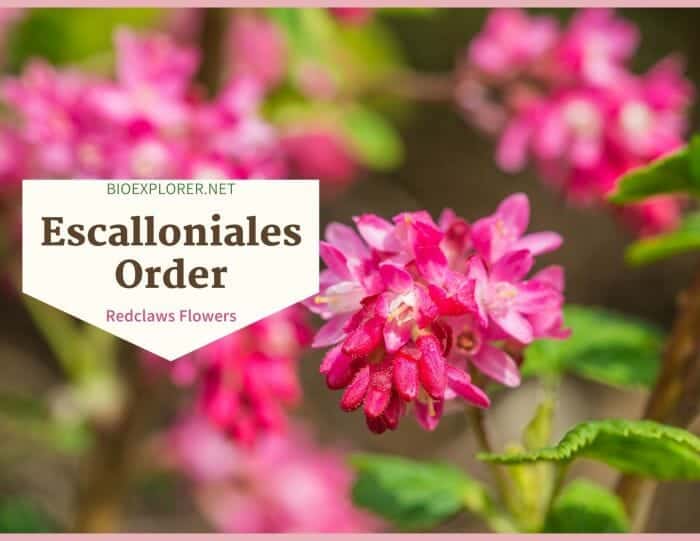
Escalloniales is an order of eudicotyledonous flowers placed under the clade of campanulidas. Being predominantly distributed in the southern hemisphere, Escalloniaceae plants possess simple, petiolate, exstipulateWhat is exstipulate?Without stipules; Stipule is a small structure of appendage found at the base of some leaf petioles. leaves, regular flowers mostly in racemose, and pentamerousWhat is pentamerous?Having parts in fives or multiples of five. floral parts.
The typically bisexual Escalloniales flowers possess abundant nectar-attracting pollinators. Redclaws and white alder are among the beneficial Escalloniacea species.
Escalloniales order has 1 family, 7 genera, and 140 species. The sole family is the Escalloniaceae, which involves 7 genera and 140 species[1].
Table of Contents
Escalloniales Distribution
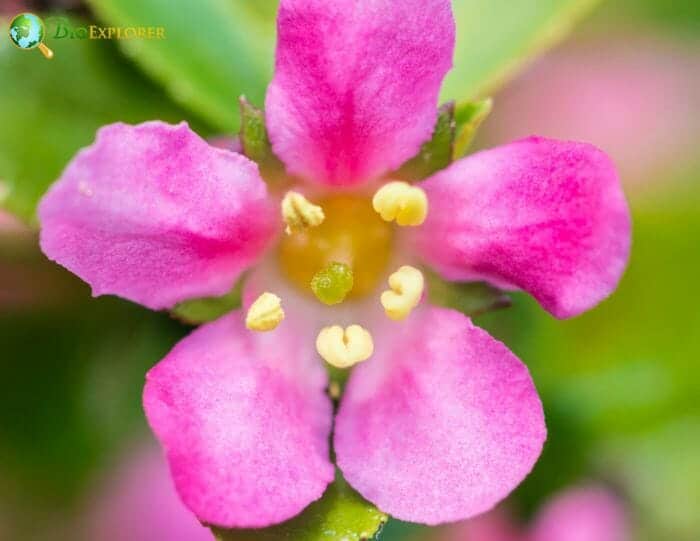
Escalloniaceae members are predominantly distributed in the southern hemisphere. Escallonia( 39 species[2]) is mainly distributed in South America.
- Other species are found in Brazil and Uruguay. The E. myrtilloides, the most widely distributed species, is found in Costa Rica, Panama, Colombia, Ecuador, Peru, Bolivia, and Argentina.
- The genus Polyosma ( 80 species[3] ) is mainly distributed in Southeast Asia. The sole genus of Valdivia is found in Valdivia Province, Chile. The only species of Forgesia, F. racemosa, is endemic to Reunion Island.
![]()
Escalloniales Characteristics
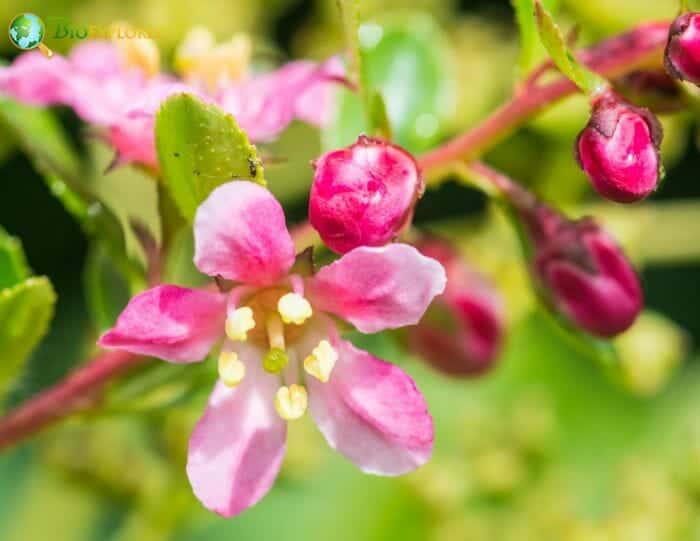
- Plant Type: Members are usually trees, shrubs, and subshrubs. The plants are non-succulent. The members are mesophytes.
- Stem: The pith of the members is somewhat spongy. Most species in this order have cork cambium and lack secretory cavities and scalariform vessel end-walls. Others are reticulately perforated and scalariform. There is no spiral thickening in the fibers.
- Leaves: Escolloniaceae leaves are opposite, alternate, or whorled. They are simple, petiolate, and exstipulate. They have entire and pinnately-veined lamina. The lamina margins of the species are dentate, serrate, or crenate.
- Flowers and Inflorescences: The flowers are usually bisexual. Members generally have racemose inflorescences.
- Sepals and Petals: The flowers are regular and are mostly pentamerous. Usually, there are 5 fused sepals in 1 whorl. The Anopterus has 6-9 sepals in the calyxWhat is calyx?A collective term for all the sepals of a flower; the lowermost whorl of floral orgrans (Plural form is calyces).. The petals are often 5; imbricateWhat is imbricate?overlap or cause to overlap; in botany terms, scales, sepals, or plates having adjacent edges overlapping; with margins of structures overlapping like shingles on a roof. or valvateWhat is valvate?Sepals having adjacent edges abutting rather than overlapping; opening by valves; edges of structures coming together so that the margins touch but won't overlap.. Anopterus has 6-9 petals, and Valdivia has 5-7.
- Stamens and Carpels: The stamens are usually 5 (some have 4 and 6), alternating with the corollaWhat is corolla?A collective term referring to the petals of a flower. members. The carpel is 2-5; united. They are isomerous with the perianth or typically less than the perianth number.
- Ovary and Fruit: The ovary is superior or inferior. The fruit is a capsule or a berry.
- Seeds: The seeds of Ascallaniales are copiously endospermic.
![]()
Escalloniales Flowers and Reproduction
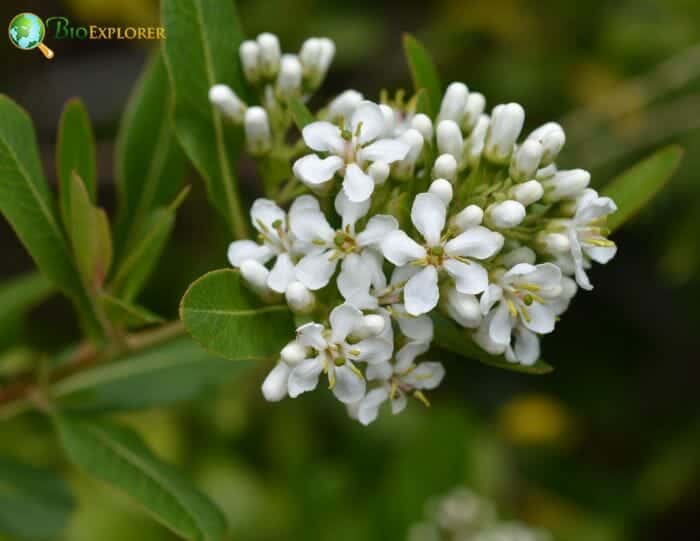
The flowers of Escalloniales are regular, actinomorphicWhat is actinomorphic?A characteristic of the flower exhibiting radial symmetry such as starfish or Daisy flower; capable of being bisected into identical halves along more than one axis, forming mirror images. Opposite is Zygomorphic., often pentamerous, usually bisexual (rarely unisexual), and hypogynous to epigynous.
- Most flowers are in axillary or terminal racemes inflorescences. Others are in panicles. Some species of Escallonia are many-flowered, reaching up to 800 flowers. The Anopterus, Forgesia, Valdivia, and some Escallonia possess few flowers. Some species of Escallonia have solitary flowers.
- The flowers have 5 (-9) persistent and fused sepals. The petals are 5(-9), free, primarily imbricate, and rarely valvate. The flowers have a nectary disk. There are 5 (-9) anternipetalous stamens; the filaments are free.
- Species have 2 (-5) fused carpels in the inferior to the superior ovary. The flowers have parietal placentation. They have few to numerous ovules. Their fruits are capsular (septicidal) or berries.
- Members of Escallonia have an abundant supply of nectar, attracting pollinators like honeybees, bumblebees, butterflies, and hummingbirds. The Valdivia genus also possesses rich nectar production, inviting hummingbirds and insects to pollinate.
![]()
Escalloniales Example Species
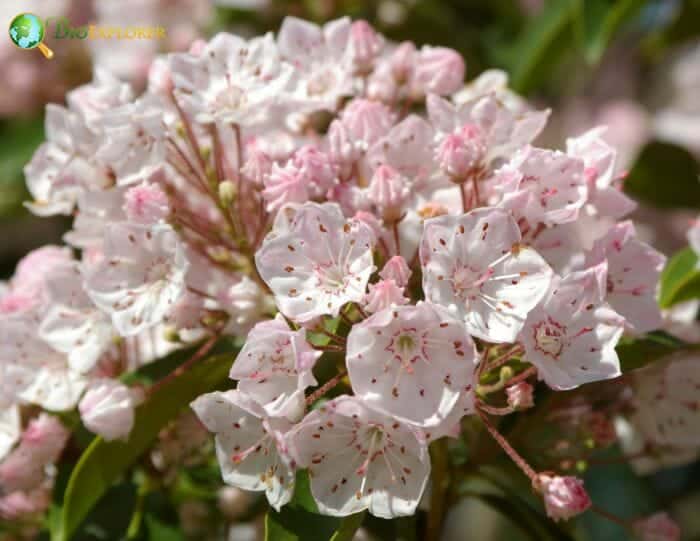
Plants of Escalloniales provide aesthetic uses, medicinal benefits, etc. The following are some of the example species of this order:
- Cloven gum box[4] – This species is an ornamental tree used for landscaping.
- Chachacoma[5] – The wood is used in making native spoons in Ecuador. It is also used in making fences and other woodcrafts.
- Redclaws/Red escallonia[6] – The species is used as a hedging plant.
- Native Laurel[7] – This garden plant is beautiful and has excellent potential in horticulture.
- Queensland laurel[8] – This species is an attractive garden plant for indoor/outdoor decoration. It also has medicinal potential[9].
- Polyosmo leratii – The plant has ornamental value.
- White alder[10] – The bark of this species has medicinal potential[11].
- Valdivia gayana
- Tribeles australis
- Dou xian mu
![]()











